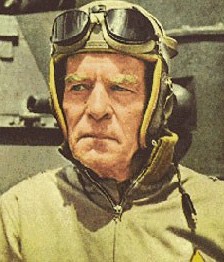U.S. Army general Chaffee is widely recognized as the father of army armor. He was the only son of the legendary U.S. Army general Adna Chaffee, Sr., and graduated from the UNITED STATES MILITARY ACADEMY in 1906. As part of the 1st Cavalry, he served in the so-called Army of Cuban Pacification (1906–07), then attended the Mounted Services School at Fort Riley, Kansas, from 1907 to 1909. Chaffee, a champion equestrian, earned the honor of attendance at Saumur, the French cavalry school, during 1911–12. He returned to Fort Riley in 1912 as an instructor at the Mounted Services School, then shipped out with the 7th Cavalry to the Philippines in 1914, returning to West Point in 1916 as senior cavalry instructor. After promotion to captain, Chaffee was assigned in August 1917 as adjutant to the 81St Division at Camp Jackson, South Carolina. He served briefly as acting chief of staff for the division, then sailed with it to France in February 1918 for service on the western front in WORLD WAR I. In France, Chaffee attended the General Staff College (March–May 1918) then served there as an instructor. In August 1918, he was appointed assistant G-3 (operations officer) for IV Corps and, soon afterward, G-3 of the 81st Division and of VII Corps (August–October) during offensives at Saint-Mihiel (September 12–17, 1918) and Meuse-Argonne (September 26–November 11). During the last days of the war, Chaffee served with the temporary rank of colonel and was G-3 of III Corps. He remained in Europe with III Corps as part of the army of occupation in the Rhineland.
In 1919, Chaffee returned to the United States as an instructor at the Line and Staff School (now the COMMAND AND GENERAL STAFF College) at Fort Leavenworth, Kansas. After brief service with the 3rd Cavalry during May–August 1920, he was reassigned as G-2 (intelligence officer) of the IV Corps area in Atlanta from August 1920 until 1921, and then as G-3 of the 1ST CAVALRY DIVISION at Fort Bliss, Texas, serving there until July 1924. He graduated from the U.S. ARMY WAR COLLEGE in 1925 and was assigned command of a squadron of the 3rd Cavalry at Fort Myer, Virginia, serving until June 1927, when he was posted to the Operations and Training Division of the War Department General Staff.
Chaffee, now a lieutenant colonel, was assigned in 1931 to command the newly formed 1st Cavalry (Mechanized) Regiment at Fort Knox, Kentucky. He subsequently served as overall commander of the 1st Cavalry (1934), doing much to establish, train, and organize the army’s first dedicated armored unit. Of even more enduring significance, it was Chaffee was developed the basic doctrine of mechanized warfare. When he headed up the Budget and Legislative Planning Branch of the War Department General Staff during 1934–38, Chaffee used his influence to fund increased mechanization. Returning to Fort Knox, he again served as commander of 1st Cavalry (Mechanized) (June– November 1938) and, promoted to brigadier general on November 3, was made commander of the 7th Mechanized Brigade (1st and 13th Mechanized Cavalry Regiments).
As the United States moved toward entry into WORLDWAR II, Chaffee directed the 7th Brigade in large-scale maneuvers at Plattsburgh, New York (1939) and in Louisiana (summer 1940). For the army and for Chaffee, these were highly significant events that allowed him to refine and further develop American armor doctrine, including the crucial concept of combining armored, infantry, and artillery operations. This combined arms approach would prove extraordinarily valuable in the coming war.
Chaffee was named commander of the Armored Force on June 10, 1940, with responsibility for all infantry tank and mechanized cavalry units, as well as supporting artillery, motorized infantry, and engineer units. He created the 1st and 2nd Armored Divisions and was promoted to major general on October 2, 1940. However, at the height of his career and on the eve of war, Chaffee succumbed to cancer, dying the summer before Pearl Harbor.
